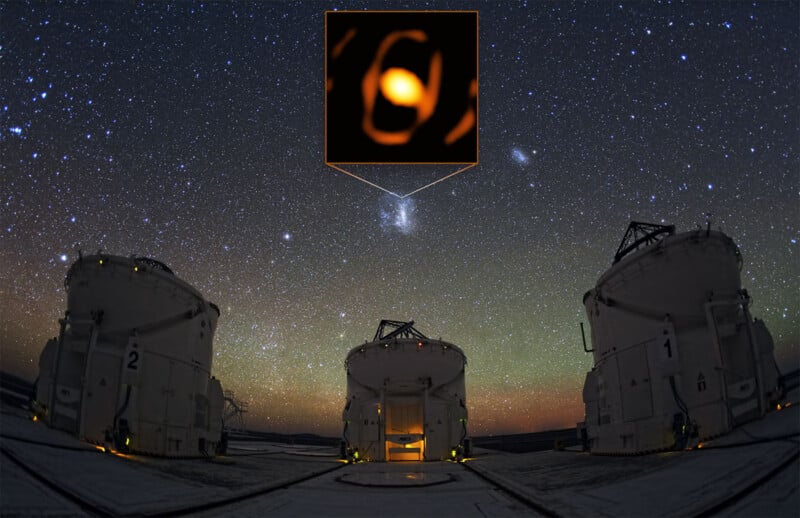This Is the First-Ever Close-Up Image of a Star Outside the Milky Way Galaxy

For the first time, astronomers captured a zoomed-in picture of a dying star in a galaxy outside the Milky Way Galaxy, not only learning vital information about the nature of the Universe but demonstrating remarkable advancements in imaging technology.
Using the European Southern Observatory’s (ESO) Very Large Telescope Interferometer (VLTI) in Chile, scientists captured a close-up view of the star WOH G64, located 160,000 light-years from Earth.
“We discovered an egg-shaped cocoon closely surrounding the star,” explains Keiichi Ohnaka, an astrophysicist from Universidad Andrés Bello in Chile and the lead author of a study reporting the observations published today in Astronomy & Astrophysics. “We are excited because this may be related to the drastic ejection of material from the dying star before a supernova explosion.”
ESO’s press release notes that astronomers have captured “about two dozen zoomed-in images of stars in our galaxy,” nobody has yet been able to do the same for stars outside the Milky Way, “up until now.”
To capture this image, scientists used the ESO’s VLTI, which combines light collected by ESO’s Very Large Telescope (VLT), “either the four eight-meter Unit Telescopes or the four smaller Auxiliary Telescopes, creating highly detailed pictures of the cosmos.” Effectively, the VLTI is a “virtual” telescope with a resolution equivalent to the maximum distance between the individual telescopes used. This is a type of telescope as the Earth-sized one used to study black holes.
Unsurprisingly, using a virtual telescope is not straightforward — every instrument needs to be up to the task and precisely calibrated to work together. Ohnaka used a similar setup in 2005 and 2007 to observe WOH G64, although technology at the time limited him and his team to just two telescopes in the array. This instrument, MIDI, was impressive at the time. The new second-generation instrument, GRAVITY, combines light from four telescopes. ESO explains that GRAVITY’s increased resolution enabled the image of WOH G64.

WOH G64 is a red supergiant within the Large Magellanic Cloud, a small galaxy that orbits the Milky Way. Scientists have observed the star for decades and call it the “behemoth star.” It is roughly 2,000 times the size of the Sun.
Since Ohnaka’s team last looked at WOH G64, a lot has changed. The star is dimmer than it was during the 2005 and 2007 observations.
“We have found that the star has been experiencing a significant change in the last 10 years, providing us with a rare opportunity to witness a star’s life in real time,” explains Gerd Weigelt, an astronomy professor at the Max Planck Institute for Radio Astronomy in Bonn, Germany, and co-author of the new study.
“This star is one of the most extreme of its kind, and any drastic change may bring it closer to an explosive end,” adds co-author Jacco van Loon, Keele Observatory Director at Keele University in the United Kingdom. Van Loon has observed WOH G64 since the 1990s.
The observed dimming may be due to the shed material surrounding the star. As for the unexpected shape of the dust cocoon surrounding the star, scientists believe the ongoing shedding or gravitational influence of an undiscovered companion star could explain it.
With a planned GRAVITY+ upgrade, Ohnaka and his team can perform follow-up observations to learn more about the star and, ideally, determine why it has dimmed and what is causing the unusual cocoon shape.
Image credits: European Southern Observatory / K. Ohnaka et al.